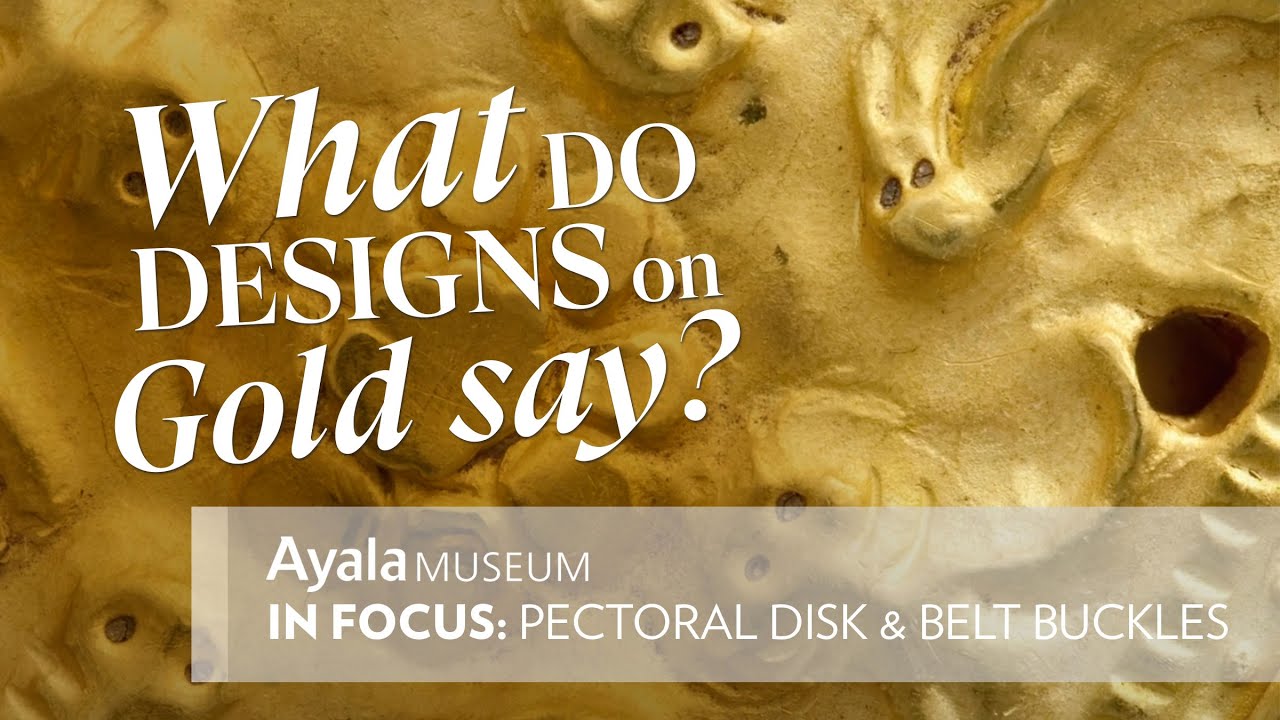Curator's Tour | Gold of Ancestors: Precolonial Treasures in the Philippines
Summary
TLDRThe 'Gold of Ancestors' exhibition at Ayala Museum showcases over 1,000 gold artifacts from the 10th to 13th centuries, reflecting the rich pre-colonial cultures of the Philippines. Curated by Florina Capistrano Baker, the collection includes gold ornaments with Southeast Asian similarities, indicating shared origins. It also features unique pieces like the massive Surigao treasure chain and anthropomorphic figures with Hindu-Buddhist influences. The exhibition highlights the significance of gold in ancient Philippine society, from birth to death rituals, and invites visitors to explore and take pride in this forgotten heritage.
Takeaways
- 🏛️ The exhibition at Ayala Museum showcases over 1,000 gold artifacts from the 10th to 13th centuries, highlighting the rich pre-colonial heritage of the Philippines.
- 🎨 The collection, assembled by Leandro Locsin and Cecilia Locsin, is considered by Dr. John N. Miksic as potentially the country's greatest tangible heritage, comparable to global gold collections.
- 🌐 The artifacts reflect cultural sophistication and regional connections, with similarities to Southeast Asian cultures, indicating shared prehistoric origins and inter-island engagements.
- 🔍 The 'ling lingo' and 'mamouli' omega-shaped ornaments are examples of widespread themes, with early versions traced back to 2500 BCE in Batanes, made from imported jade.
- 🏺 Gold objects like modesty covers and finger rings feature Hindu god motifs, suggesting cultural and possibly religious ties with Southeast Asia.
- 👑 The exhibition includes gold regalia that symbolized authority and prestige among pre-colonial Philippine leaders, such as the 'datu', who wore these to affirm their status.
- 🌟 The Surigao treasure, a massive gold chain weighing nearly 4 kilograms, is a standout piece, unique for its design and size, and was accidentally discovered in 1981.
- 📜 The Boxer Codex provides insights into how these gold ornaments were worn, showing pre-colonial inhabitants adorned in silk and gold, with a 300-year gap bridging the exhibition's artifacts and early contact accounts.
- 💍 Detailed descriptions by scholars like Ignacio Alcina and Antonio Pigafetta document the use of traditional jewelry, with specific cultural preferences and regional variations in ornamentation.
- 🔮 Anthropomorphic gold figures and vessels in the exhibition reveal the influence of Hindu-Buddhist beliefs, with intricate designs and motifs that echo ancient Southeast Asian and Indian art.
Q & A
Who is Florina Capistrano Baker?
-Florina Capistrano Baker is the curator of the 'Gold of Ancestors' exhibition at the Ayala Museum.
What is the significance of the gold artifacts featured in the exhibition?
-The gold artifacts, dated from the 10th to 13th centuries, are considered the country's greatest tangible heritage and represent the sophisticated cultures that flourished in the Philippines before Spanish colonization.
Who originally collected the gold artifacts on display?
-The late National Artist for Architecture, Leandro Locsin, and his archaeologist wife Cecilia Locsin originally collected the gold artifacts.
What is the connection between the gold artifacts and Southeast Asian cultures?
-The artifacts show similarities with those from other Southeast Asian cultures, affirming regional affinities and inter-island engagements that existed before sustained contact with the Western world.
What are some examples of omega-shaped ornaments found in the exhibition?
-Examples of omega-shaped ornaments include the 'mamouli' known in parts of Indonesia and 'Ling lingo' in the northern Philippines.
How were the early versions of the linglingo produced?
-Early versions of the linglingo were produced in Batanes as early as 2500 BCE, using imported jade from Taiwan.
What do the gold chains and waist sashes signify?
-Gold chains and waist sashes, along with other gold regalia, were used by early Philippine society leaders to affirm their authority and prestige.
What is the significance of the Surigao treasure mentioned in the script?
-The Surigao treasure is a massive gold chain weighing almost 4 kilograms, which is the only known example of its kind and is more than the entire gold find from the 7th Century site of Okeo in present-day Vietnam.
How does the Boxer Codex relate to the exhibition?
-The Boxer Codex, dated to the late 16th century, provides watercolor images that show how pre-colonial inhabitants wore their gold ornaments, offering insights into the use of the artifacts on display.
What is the connection between the gold artifacts and Hindu-Buddhist culture?
-The gold artifacts, including anthropomorphic figures and vessels, bear witness to the Hindu-Buddhist substratum of the pre-colonial past in the Philippines, with some forms recovered before the arrival of Islam and Christianity.
What role did gold play in the lives of pre-colonial Filipinos according to the exhibition?
-Gold played an important role in the lives of pre-colonial Filipinos, from birth to death, and was used in rituals and as a symbol of power and wealth, ensuring a cordial welcome to the afterlife.
Outlines

Cette section est réservée aux utilisateurs payants. Améliorez votre compte pour accéder à cette section.
Améliorer maintenantMindmap

Cette section est réservée aux utilisateurs payants. Améliorez votre compte pour accéder à cette section.
Améliorer maintenantKeywords

Cette section est réservée aux utilisateurs payants. Améliorez votre compte pour accéder à cette section.
Améliorer maintenantHighlights

Cette section est réservée aux utilisateurs payants. Améliorez votre compte pour accéder à cette section.
Améliorer maintenantTranscripts

Cette section est réservée aux utilisateurs payants. Améliorez votre compte pour accéder à cette section.
Améliorer maintenantVoir Plus de Vidéos Connexes

Curator's Tour | Ceramics and Cultural Currency: Exchanges of Pottery and Prestige

What Do Designs on Pre-colonial Gold Say? | In Focus: Gold Pectoral Discs & Belt Buckles

Philippines Treasure Part I (GMA7) feat. Ayala Museum

The Lost Gold of Pre-colonial Philippines

West African Kingdoms of Ghana, Mali & Songhai

Sinulog: The Sulu Roots (with Explainer)
5.0 / 5 (0 votes)
